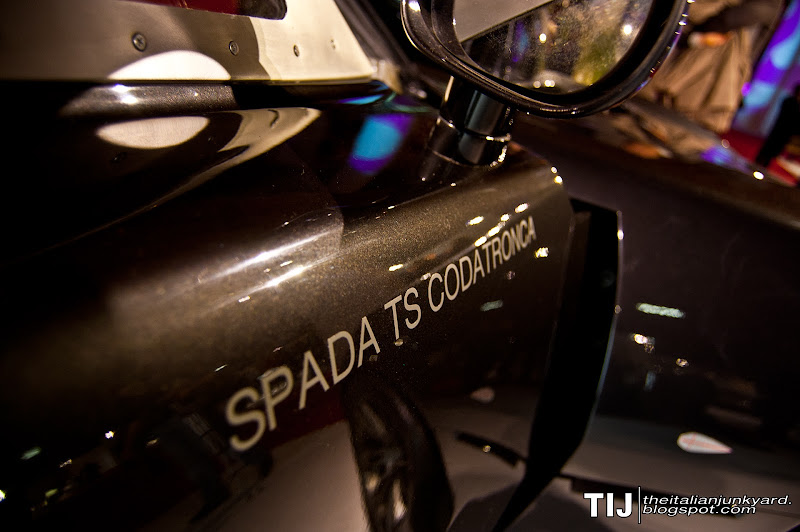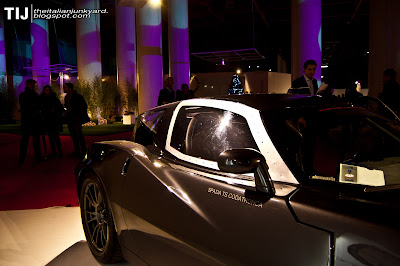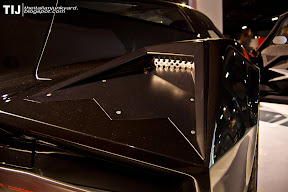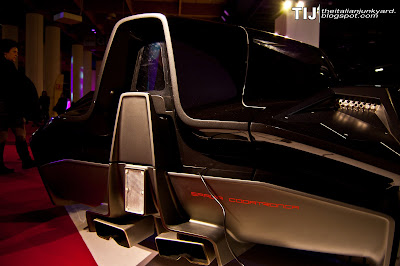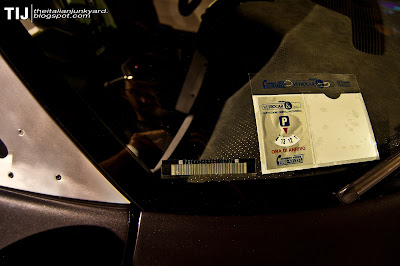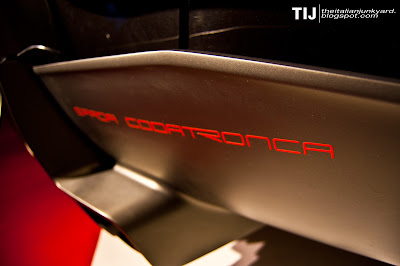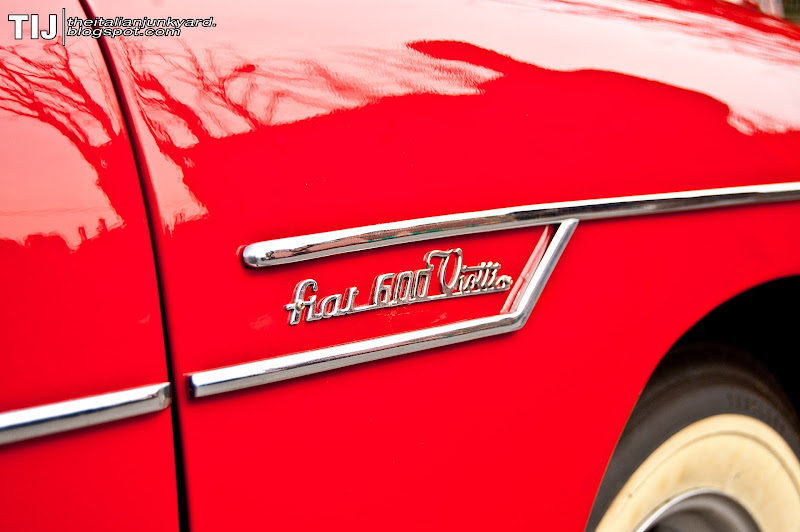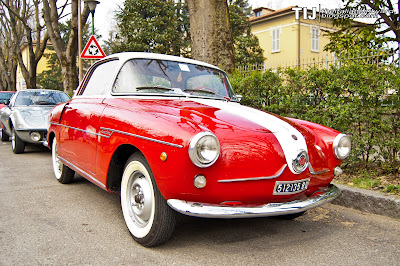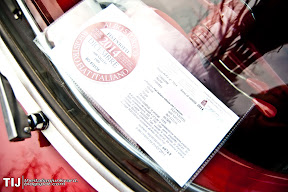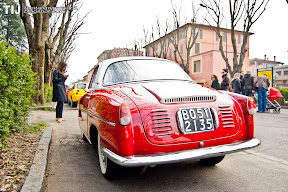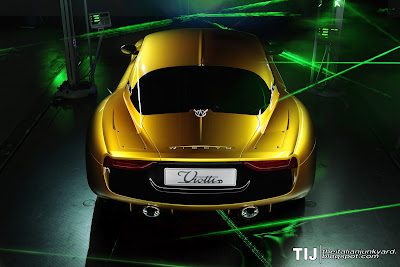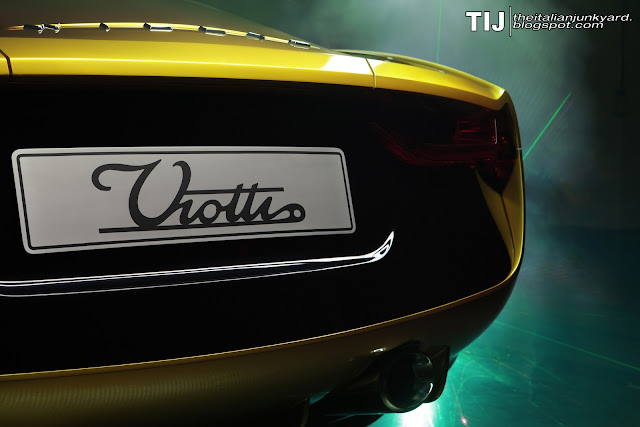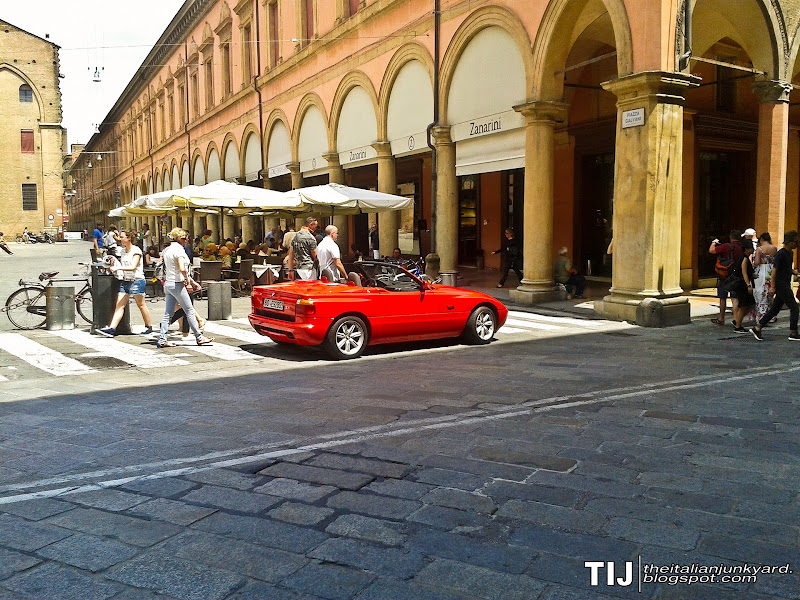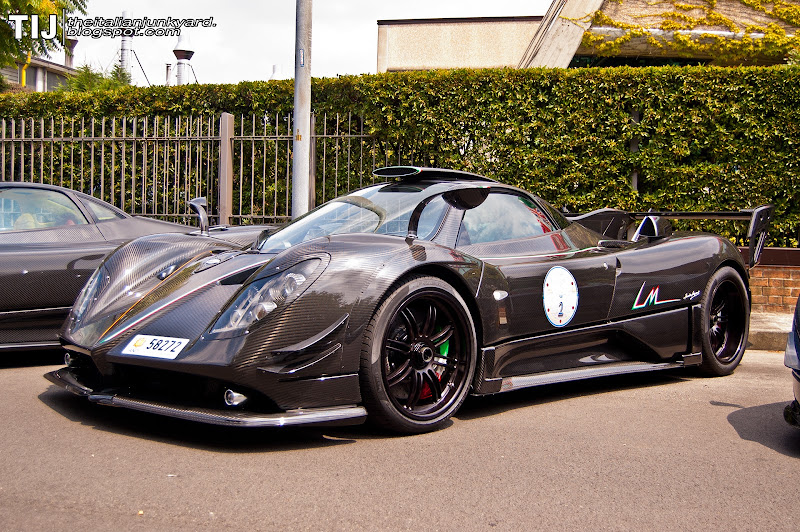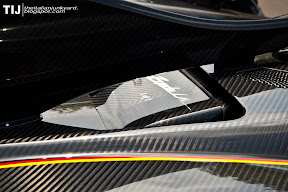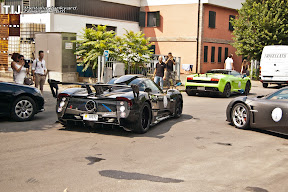I mentioned what present day Viotti is doing with its renewed shop, and you might have recognized under the wrap a familiar shape, the Bertone Mantide. No, I'm not going to talk about all over again, it was more than five years ago and even if the little to inexistent success that car has seems unfair to me, it had its time both here and all over the world.
So what's the other connection with Viotti? The Mantide was not the only Corvette-based project they had something to do with, and even if the incriminating picture has been long pulled off Viotti's website, quite some evidences were pointing in the, pun intended, pointy direction of the Spada Vetture Sport Codatronca TS. Such a long name might suggest something entirely different, but there might be some reasoning behind it.
White Spada Vetture Sport simply suggest that behind this venture is none other than Ercole Spada joining forces with his son Paolo Spada, the original concept was unveiled in 2007 under the SpadaConcept TS Codatronca moniker. I've no idea, and somewhat little interest into, what that was all about, but the focus here should be about the second part. Codatronca. Since it isn't even a proper word in Italian, it's hard to directly translate into English. You may refer to it as a fastback, or even as a shooting break, truth is coda-tronca means the tail of the car has been, ideally, cut off, in complete contrast to the boat-tail design of the thirties if you like. Enter one Professor Wunibald Kamm, you might have heard of it.
The somewhat revolutionizing idea of this German gentleman is that without extending indefinitely the tail of a solid object moving into stable flowing fluid, the aerodynamics resistance, drag, met by said solid object wouldn't increase to a noticeable extent. Of course it isn't as easy as it sounds, and indeed you already know that planes do not have a square tail (even those with the engine positioned right on the tail), same as most boat and so on. Without entering annoying and complicated calculations so to keep aerodynamics the interesting subject it actually is, there is a trade off in this chopping of tails and trunks. Something more properly or famously studied by Morel, or Ahmed, with their studies on the slant angles on the tail of solid objects in a flowing fluid.
At this point, you should consider some other German examples, chiefly from the Volkswagen Group, but BMW has been busy on the subject lately, and unfortunately (and misusing the term "GT" too while they were at it). Consider the Porsche Panamera Gran Turismo (full name), or the Audi A7 Sportback. Or even the usual suspect, the Porsche 911 (in any iteration, mind you). You can immediately notice that their profile is quite soft and slowly pointing to the rear end without delimiting a proper trunk volume. The A7 squares it off more abruptly, the Panamera is rounder but in both cases there is no proper end to the tail or to the shape of the car, but the trade off is evident, enter the active rear wing.
Contrarily to common belief, a rear wing doesn't always act as a downforce device, more correctly it is often required to reduce lift on most cars. Slowly decreasing profiles such as those listed above generates the same upwash vortexes as those seen on delta-wing supersonic planes, like the famous Concorde or the Dassault Mirage, that's to say exactly what makes those planes fly. This are basically two cone vortexes, one per each side, generating right at the top of the last pillar and rotating so to literally lift the air close to the car, and therefore to an extent the car itself. More properly explained but still in common terms, the air acquires speed upward, pressure locally decreases, the underneath body (car) is sucked up. So while the drag generated from such fastback design is very low, great for fuel economy, it's quite problematic for high speed stability and downforce in general, which is something on the border between a safe drive and fun spirited drive. You want as much net downforce as possible, or as little net lift as possible, in both cases.
In order to reduce or completely destroy these vortexes, it is sufficient to put a device right before (all those "spoilers" glued on top of the back windows on many small cars, such as the Peugeot 206, or small enges on rear lamps like on most Audi, Mercedes-Benz, Fiat, etc) or after the area involved by the vortexes themselves. At low speed the energy carried on by them is low enough not to constitute any sort of problem so the active wing of the Audi A7 and Porsche Panamera stay in place to increase fuel economy. But once the aerodynamics become relevant the wing pops up and kills the vortex so to reduce the chances to have a reduced weight (as in force of gravity, not mass) on the rear axle creating instability (both in the mathematics and physics sense of the word). The wing itself do not provide downforce per se, but it surely reduces any lift phenomenon. Same for the 911 of course and most other cars with any sort of an active rear wing.
It shouldn't surprise though that such wings are always deployed at 120 km/h or so. Which is exactly the top speed hit during the NEDC (New European Driving Cylce) test, developed to determine the fuel consumption of a consumer car. There is no doubt the fuel economy greatly decreases at 120 km/h, not simply because of the increased required power, but also because of the worsened aerodynamics properties of the car once the wing is deployed. So I'd expect that even if there was some relevant amount of lift (yet not dangerous of course) at 110 km/h, automakers would still program the wing to deploy at 120 km/h just to save the official fuel consumption rating. Shocking, I know.
A quite famous episode is once again related to an Audi, the first gen Audi TT to be precise. In the middle of its production stories began to surface about high speed accidents involving the car, so with some serious consequences for the drivers. Eventually, the design was found at fault, chiefly because of the rear suspension geometry and because of the aerodynamics of the car, in other world because of the lack of mechanical and aerodynamic grip on the rear axle. The suspensions were modified and a fixed wing, rectagular in profile and only a few centimeters tall, was installed, enough to reduce said vortexes to an harmless entity.
Despite the quite dangerous mishap, it must be said Audi marketing department handled the subject rather well. Either that, or most customers have a serious issue with short term memory. That's shocking news as well.
What with the Codatronca though?
Simply put, Ercole Spada made its trademark out of the Kamm tail, most famously in the Alfa Romeo Giulia TZ and Giulia TZ2 while working at Zagato, both showcasing an abruptly cut tail but nonetheless achieving great performances and fame. Zagato then revived the idea with the Alfa Romeo TZ3 Corsa (based on the Belgian Gillet Vertigo, which already featured a Maserati 4.2 liters V8 engine) and Alfa Romeo TZ3 Stradale (based on the Dodge Viper SRT-10 from 2008, with its 8.3 liters V10),
As for the modern SVS Codatronca TS, it's based on the Chevrolet Corvette Z06 (or simply Corvette Z06 as it was briefly known in Europe). With the drivetrain slightly tuned to 630 bhp (vs 507 bhp in standard form) and the chassis completely unmolested, all its most relevant changes are focused on its exterior, and interior, at least from my point of view. So forgive the unforgiving almost-track-only sport tires fitted on it.
While I immediately licked the fresh approach of its general design, the out of the chorus tail and the clear hints to the most famous stealth bomber, the Lockheed F-117 Nighthawk, I felt a little underwhelmed by the car itself in the flesh. A lot had to do with the proportions not being so elegant, a way too long and flat front clam with a tall and angular tail, a perceived finish less than exiting (even if I couldn't name one specific problem with it, as the car was probably completely ok), and some design decisions worth some more discussions.
Surely the metal-look (and if it was metal indeed I can't remember, but I do remember it didn't look the part) frame around the windows didn't help, and the uninspired and edgy interior wasn't of my likings, raw and without an apparent unique them or idea, same for the generalist aftermarket wheels from OZ.
According to Paolo Spada they had made two cars in 2010, the one here depicted belonging to himself, and another for a customer. Truth be told I don't think I've ever seen a picture of said customer car, but the world is full of greedy collectors hiding their gems to spying eyes.
Later on in 2011 they unveiled the Codatronca Monza. Essentially a track-only speedster variant of the Codatronca TS, it felt even larger and the unfinished, because racing, interior didn't help at all. A road going car was even spotted with safety bars worth of an emergency check up with your loyal optometrist. And that was the end of it.
It may seem like I have no love for the car. Well, I had decent expectations and was let down, plus I later realized they were quite late on the military jet fighter bandwagon (hint, Reventòn), but I can't help but feel for yet another unique take on the automotive passion and the vision some men are still willing to put into their four wheeled creations. That, and the full on price of "only" 180.000 € seemed like a bargain. Definitely much less than the 2 Millions € asked for the Bertone Mantide (well, that was a Corvette ZR1 to be fair...), which itself didn't sell well... they actually sold only the one car the produced.
What does this say? No more room for special vehicles with outrageous prices? No, definitely not. It's rather something along the line "it has to be flashy, recognizable, and famous", which is why a lot of tuning companies are flourishing around the world and in emerging markets (Mansory, what have we done) while bespoke and specialized shops like SVS or Bertone itself are struggling to sell or survive at all. Because let's face it, the Codatronca TS may not be a beauty in itself, but it's better than a pimped Ferrari with blot on (or glued on) psuedo carbon fiber parts with little to no functional reason to exist and engines tuned without the slimmest chance of proper tests.
But that's the world we live in, until I release my own octa-turbo-supercharged carbo-flying-uranium megagigawatt hypercruiserGT (tradermark, hands off). In the meantime, enjoy what Zagato has to offer while it lasts.
ll Watermarked Pictures and Words Copyright: Damiano Garro for The Italian Junkyard
Other shots copyright: Spada Vetture Sport
This article can be linked to from other websites but its content and the pictures can't be reproduced on any other website without my written permission Want to know more?

